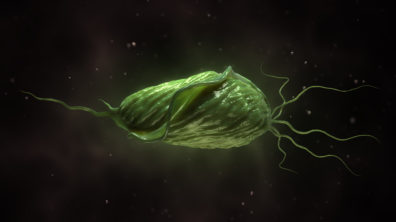
Sexually-transmitted infection (STI) - February 01, 2021
Clinical Performance of the BD CTGCTV2 assay for BD MAX™ System
Clinical Performance of the BD CTGCTV2 Assay for the BD MAX™ System for Detection of Chlamydia trachomatis, Neisseria gonorrhoeae, and Trichomonas vaginalis Infections
Barbara Van Der Pol 1, Edith Torres-Chavolla 2, Salma Kodsi 2, Charles K Cooper 2, Thomas E Davis 3, Kenneth H Fife 4, Stephanie N Taylor 5, Michael H Augenbraun 6, Charlotte A Gaydos 7
February 2021
Abstract:
Background: Diagnostic options to combat the increasing rates of sexually transmitted infections recorded throughout the world increasingly include multiplex assays. Here we describe the estimated sensitivity and specificity of a triplex molecular assay that simultaneously detects Chlamydia trachomatis (CT), Neisseria gonorrhoeae (or gonococci [GC]), and Trichomonas vaginalis (TV).
Methods: Participants (2547 women and 1159 men) were recruited from 12 clinics in the United States. BD CTGCTV2 for BD MAX™ System assay (CTGCTV2) results were obtained from vaginal and endocervical swabs, endocervical samples in cytology medium, and female and male urine. Results were compared with infection standards that were sample type and pathogen dependent.
Results: Female specimen sensitivity estimates ranged from 92.7% to 98.4%, 92.9% to 100%, and 86.6% to 100% for CT, GC and TV, respectively. Male urine sensitivity estimates were 96.7%, 99.2%, and 97.9% for CT, GC, and TV, respectively. Specificity estimates were >98.7% for all sample types.
Conclusions: BD CTGCTV2 performed well using a variety of sample types. As a true triplex assay, performed using a benchtop instrument, BD CTGCTV2 may be useful in settings where no testing is currently performed and in settings, such as reference laboratories, where testing turnaround time may be several days. Use of this assay at local laboratories may result in greater access to testing and a shorter time to result, which are important steps for improving our ability to combat sexually transmitted infections.
Copyright © 2020 The Author(s). Published by Wolters Kluwer Health, Inc. on behalf of the American Sexually Transmitted Diseases Association.
Conflict of interest statement
Conflict of Interest and Sources of Funding: B.V.D.P. received institutional research support, honorarium, or consulting fees from Becton, Dickinson and Company; Atlas Genetics; Beckman Coulter; Click Diagnostics; Hologic; Luminex; Roche; and SpeeDx. C.A.G. received institutional research support, honorarium, or consulting fees from Becton, Dickinson and Company; Atlas Genetics; Beckman Coulter; Click Diagnostics; Hologic; Quidel; and SpeeDx. E.T.-C., S.K., and C.K.C. are employees of the study sponsor. T.E.D., K.H.F., S.N.T., and M.H.A. have no conflicts of interest.













